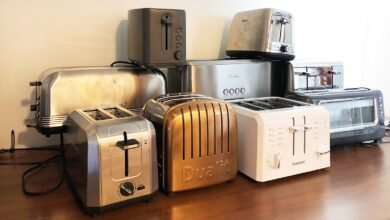The Ultimate Guide to Baby Cribs: Choosing the Perfect Sleep Space for Your Little One

When preparing for the arrival of your baby, selecting the right crib is one of the most important decisions you’ll make. A crib not only serves as a safe sleeping environment for your child but also enhances the nursery’s decor. In this guide, we’ll explore the different types of baby cribs, safety considerations, and tips for choosing the best one for your family.
Why a Quality Crib is Essential
1. Safety First
A crib is where your baby will spend a significant amount of time, especially in the first few months. Ensuring that the crib meets safety standards is paramount. A well-designed crib minimizes the risk of accidents, providing peace of mind for parents.
2. Comfort for Your Baby
A good crib will provide a comfortable and secure sleeping environment for your little one. A quality mattress and appropriate bedding will help ensure your baby sleeps soundly and peacefully.
3. Long-Term Investment
A crib is a significant purchase that can last through several stages of your child’s early life. Many models are designed to grow with your child, transitioning from crib to toddler bed, making them a worthwhile investment.
Types of Baby Cribs
1. Standard Cribs
Standard cribs are the most common type and are typically rectangular in shape. They are designed for infants and toddlers, with adjustable mattress heights for convenience. Standard cribs often come in various styles and finishes, making it easy to match your nursery decor.
Pros:
- Wide range of styles and prices
- Durable and sturdy
- Adjustable mattress height
Cons:
- Takes up more space compared to other options
2. Convertible Cribs
Convertible cribs are versatile options that can transform as your child grows. They usually convert from a crib to a toddler bed, daybed, or even a full-size bed. This adaptability makes them a popular choice for parents looking for long-term use.
Pros:
- Grows with your child
- Long-term investment
- Flexible use for different ages
Cons:
- Generally more expensive
- May require additional purchases (e.g., conversion kits)
3. Mini Cribs
Mini cribs are compact versions of standard cribs, making them ideal for smaller spaces or for parents who want a portable option. They typically fit standard crib mattresses but take up less room, allowing for easy movement.
Pros:
- Space-saving design
- Ideal for small nurseries or apartments
- Portable and lightweight
Cons:
- Limited use as your child grows
- May not fit all standard bedding
4. Cradle and Bassinet
Cradles and bassinets are smaller sleeping options designed for infants, often used in the early months. They can be portable and allow for easy movement around the house, making them convenient for parents who want their baby close by.
Pros:
- Compact and easy to move
- Ideal for newborns
- Often comes with rocking features
Cons:
- Limited lifespan as the baby grows
- Less sturdy compared to cribs
5. Travel Cribs
Travel cribs are designed for easy portability and are perfect for families on the go. They usually fold up compactly and can be set up quickly in various locations, from vacations to grandparents’ homes.
Pros:
- Lightweight and portable
- Easy to set up and take down
- Convenient for travel
Cons:
- Not as sturdy as standard cribs
- May have limited features
Safety Considerations
When selecting a crib, safety should be your top priority. Here are some essential safety tips to keep in mind:
1. Check for Safety Standards
Ensure the crib meets safety regulations set by organizations like the Consumer Product Safety Commission (CPSC). Look for cribs that are JPMA-certified, indicating they meet safety standards.
2. Avoid Drop-Side Cribs
Drop-side cribs have been banned in many countries due to safety concerns. Opt for a crib with fixed sides to prevent any risk of entrapment or falls.
3. Ensure Proper Mattress Fit
Choose a mattress that fits snugly in the crib with no gaps. This minimizes the risk of your baby getting trapped between the mattress and the crib walls.
4. Regularly Inspect the Crib
Periodically check for loose screws, broken slats, or any wear and tear. Keeping the crib in good condition ensures a safe sleeping environment.
Tips for Choosing the Right Crib
1. Consider Your Space
Evaluate the size of your nursery before making a purchase. Ensure you have enough space for the crib and room to move around, as well as space for additional furniture like changing tables or dressers.
2. Test the Crib
If possible, test the crib in-store. Check for sturdiness, ease of assembly, and how easily the mattress can be adjusted.
3. Read Reviews
Research different brands and models by reading reviews from other parents. This can help you gain insight into the product’s durability, ease of use, and overall satisfaction.
4. Budget Wisely
Cribs come in a wide range of prices. Set a budget and explore options within your range, keeping in mind that a higher price often reflects better quality and durability.
Conclusion
Choosing the right baby crib is a vital step in preparing for your little one’s arrival. By considering factors such as safety, type, and your family’s needs, you can find a crib that provides a safe and comfortable sleeping environment. Investing time in selecting the perfect crib will ensure peace of mind and create a cozy nursery space for your baby to grow and thrive. Happy parenting!



